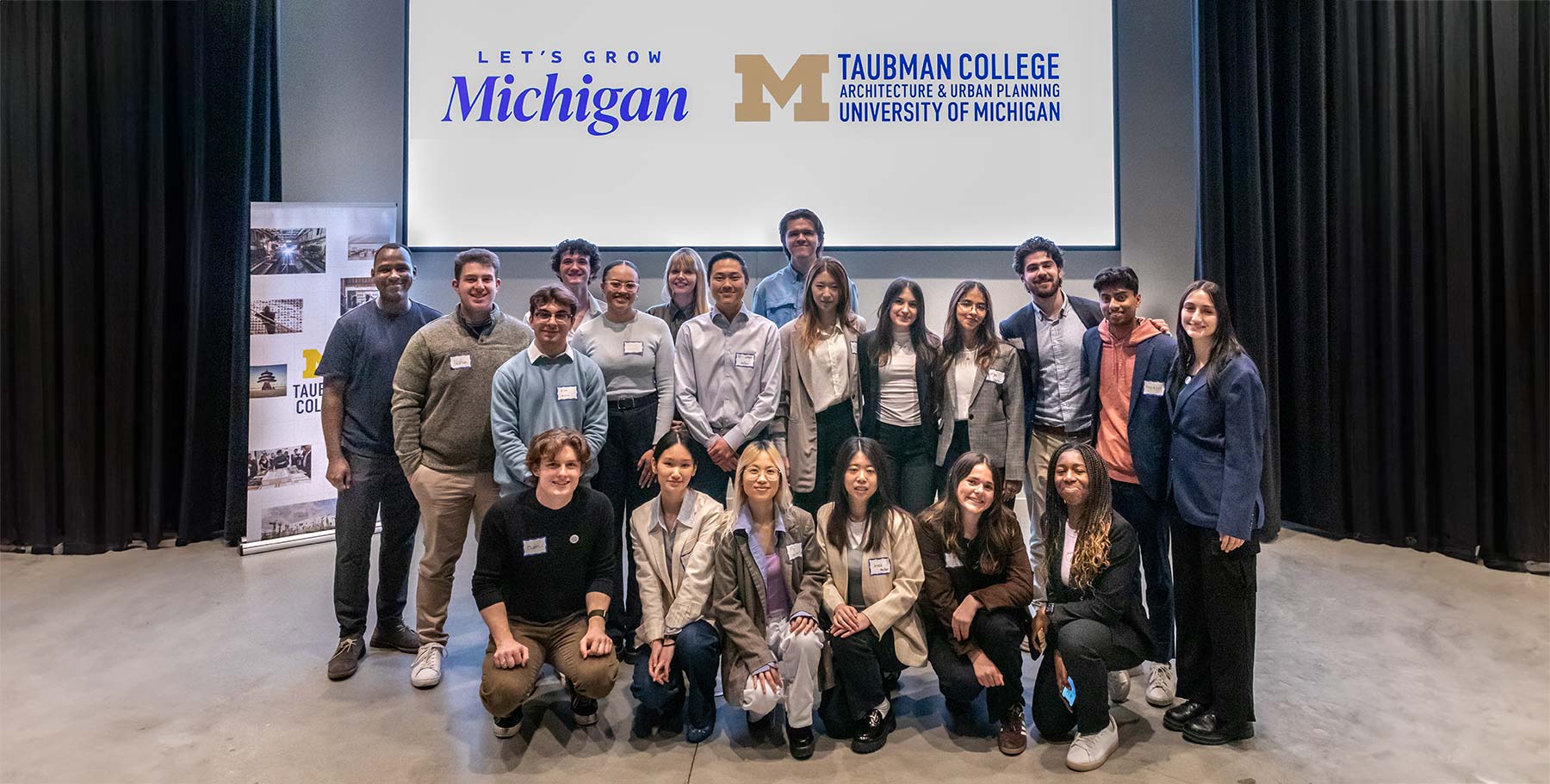Collin Garnett, M.Arch ‘23, has received Taubman College’s 2023 George G. Booth Traveling Fellowship. The Booth Fellowship, which began in 1924, annually provides a $13,000 stipend to recent Taubman College graduates pursuing architectural research that requires international travel.
Garnett’s “In-Svalbard: Futurist Archives at Work Above the Arctic Circle” proposes travel along the northern coast of Norway and the island of Svalbard, visiting communities, infrastructures, and research centers that simultaneously reflect on the past and respond to the future. The trip month-long trip is planned for the summer of 2024. It will be a continuation of research conducted as part of Garnett’s thesis and contributes to their larger exploration of responsive architecture typologies and adaptive reuse.
Located above the Arctic Circle and in close proximity to the North Pole, Svalbard is an island threatened by anthropocentric-driven climate change, warming at a rate six times faster than anywhere else on the planet.
Garnett says, “Svalbard is uniquely situated at the precarious intersection of the climate crisis, past and present resource extraction, double-edged geopolitical ‘neutrality,’ and global archivist practices. Its landscape is riddled with architectures that respond to these issues: vaults dedicated to preserving biodiversity, satellite farms actively reporting rising water levels, and local building methodologies that utilize raised plinths in response to dynamic ground conditions, among others.”
The proposal foregrounds both preservation and projection. Garnett will analyze and document through the use of traditional photo documentation, photogrammetry, and map-making, compiling these items alongside writings in the form of a travel journal and atlas. This work will be curated as a web resource for reference and submitted to the Arctic World Archive, currently operating as an internet archive within the repurposed Gruve 3 mineshaft in Longyearbyen.
Garnett says this documentation will be “styled after a lineage of similar documents ranging from the 17th century to the present with the aim to analyze ongoing and planned archivist practices for futurity, efforts that race against the clock seeking to somehow document the very culture that threatens to erase it.”
The research will be organized into four parts:
- ‘Architectures of Adaptation’ – exploration of boathouses, fisherman’s cottages, and other typologies that utilize Pier + Plinth to adapt to ever-changing coastlines.
- ‘Territorial Typologies’ – infrastructures left behind from eras of exploration and resource extraction; these vestiges speak to a relationship with the land as well as the tools and systems of navigation and knowing.
- ‘Ephemerality + Archives’ – architecture that attempts to preserve some aspect of culture and environment, especially in moments of fragility.
- ‘Forward Reflections’ – sites that engage with memorial as archive while simultaneously conducting research in anticipation of the future.
The alumni council selected Garnett’s proposal from a number of entries because the topic is compelling and relevant to the present day. They appreciated “the multivalent research, preservation and projection, and how the proposal examines architectures that respond to highly volatile environmental conditions.”





